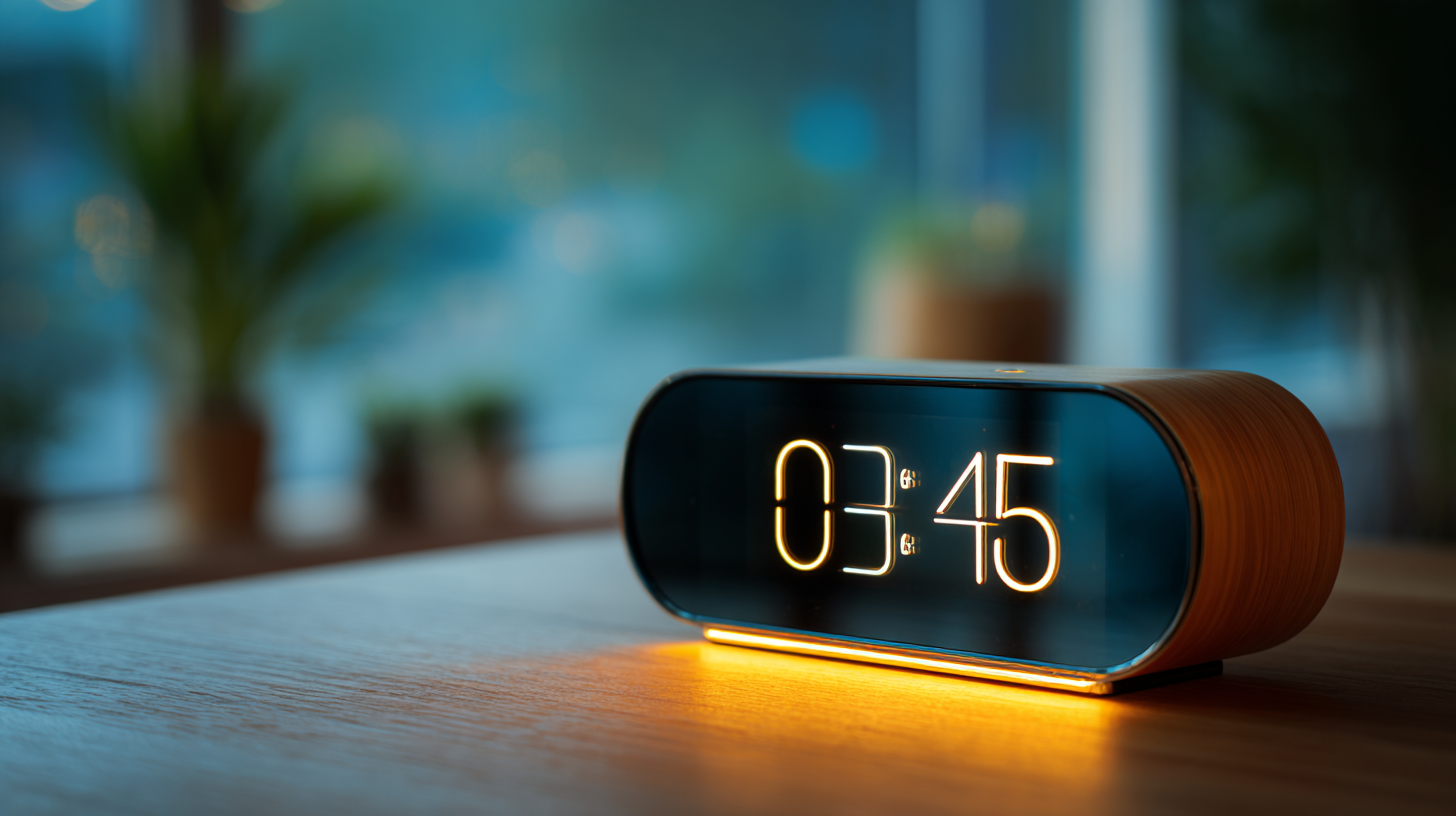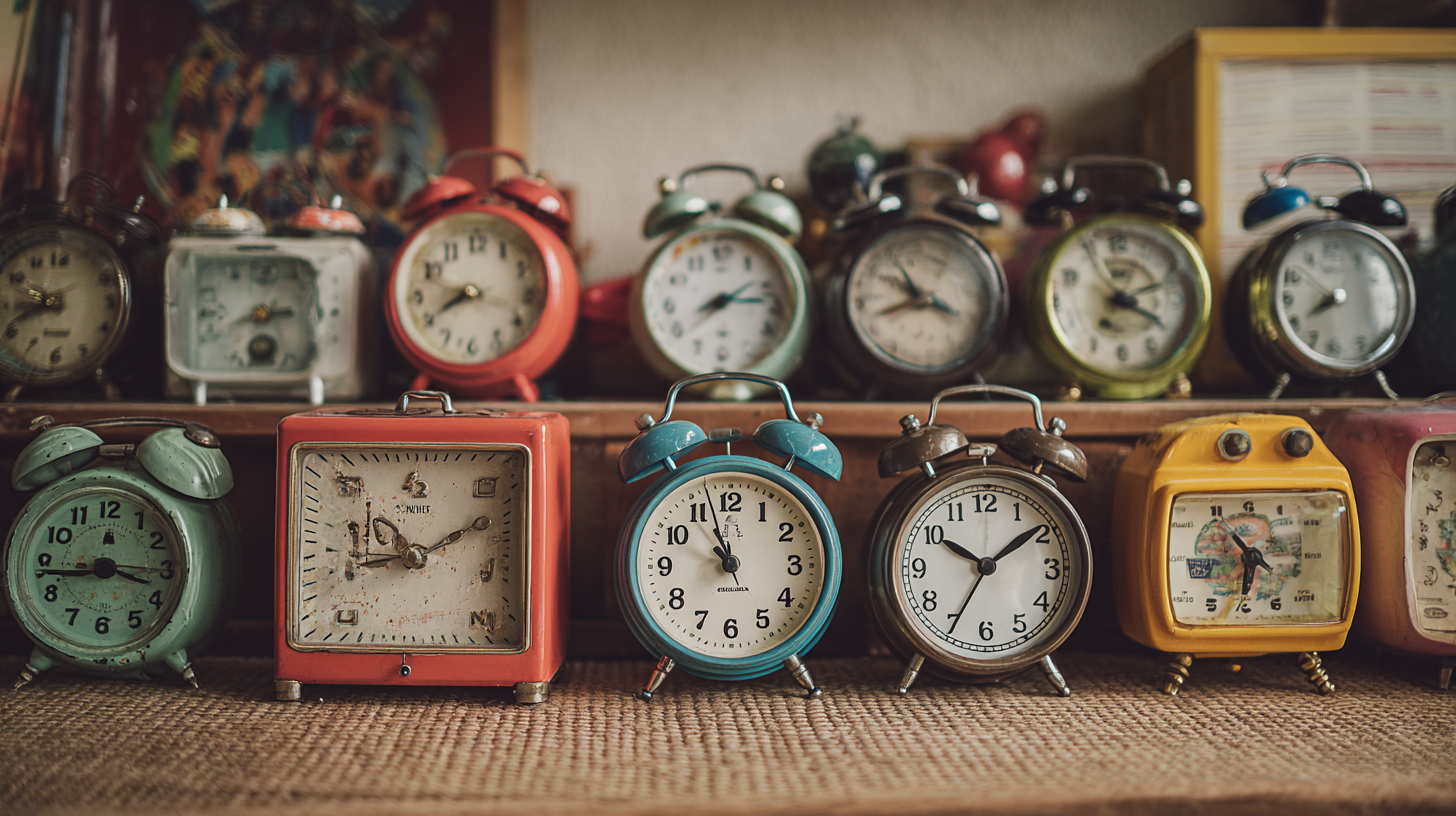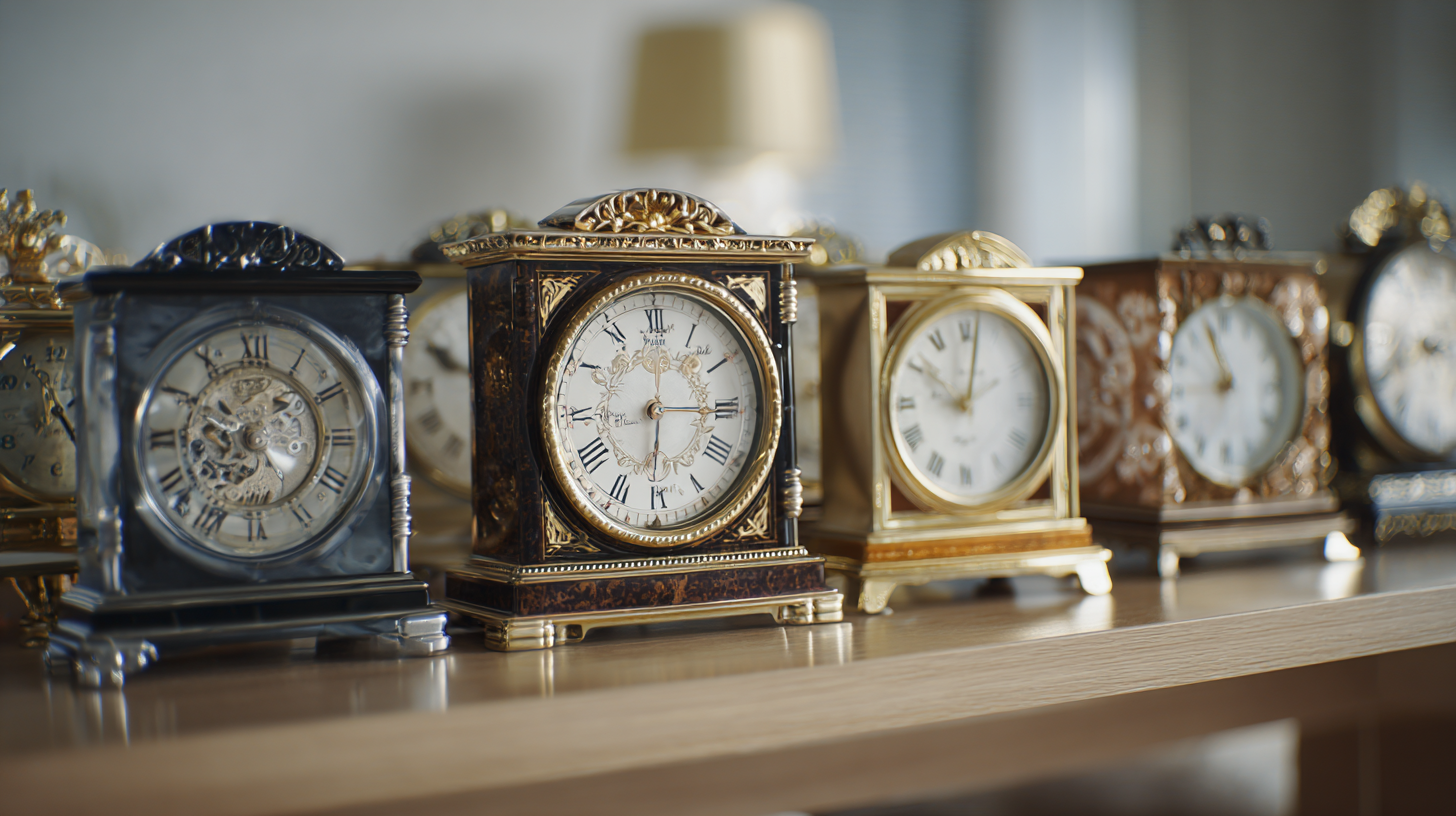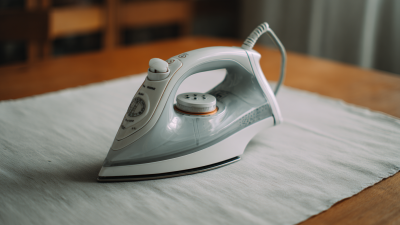In today's fast-paced digital world, the demand for precise timekeeping has led to a surge in the popularity of Electronic Clocks. According to a recent report by Market Research Future, the global electronic clock market is projected to grow at a compound annual growth rate (CAGR) of 5.6% from 2023 to 2030, driven by advancements in technology and consumer preferences for multifunctional devices. As consumers become more discerning, the need for innovative features such as smart connectivity, energy efficiency, and aesthetic design becomes increasingly significant. This article aims to guide you through the process of selecting the right Electronic Clock by exploring industry trends, consumer insights, and essential features to consider, ensuring that you make an informed choice in a crowded marketplace.

When selecting an electronic clock, it is essential to consider various features that cater to your needs. Firstly, the display type plays a significant role; LED and LCD screens offer clarity and energy efficiency, while digital displays can provide brightness and adjustability. Additionally, look for features such as adjustable brightness settings, which can enhance visibility in different lighting conditions—ideal for both day and night use.
Another crucial aspect to contemplate is the alarm functionality. Many modern electronic clocks come equipped with multiple alarm settings, customizable tones, and even vibration alerts, making them suitable for a range of preferences. Moreover, integration with smart home systems has become increasingly popular, allowing users to synchronize their clocks with other devices for enhanced functionality, such as setting reminders or managing schedules. As consumer preferences shift toward more versatile and integrated features, understanding these key elements will enable you to select an electronic clock that not only tells time but also fits seamlessly into your lifestyle.

In 2023, design aesthetics play a crucial role in consumers' decisions when choosing electronic clocks. According to a recent report by Statista, 68% of consumers prefer clocks that enhance their home decor, indicating that style significantly influences purchasing behavior. Minimalist designs are particularly gaining traction, as sleek lines and neutral colors appeal to modern tastes, with the market for minimalist electronic clocks projected to grow by 15% over the next two years.
Additionally, a survey conducted by the Home Decor Association revealed that 74% of consumers consider the visual appeal of a clock as an essential factor in their choice. Clocks that integrate artistic elements or unique features, such as digital displays fused with traditional clock faces, are becoming increasingly popular. This shift underscores the importance of marrying functionality with aesthetics, as consumers seek pieces that not only serve a purpose but also reflect their personal style. Therefore, when selecting an electronic clock, considering its design is paramount to ensuring it complements the overall ambiance of one’s space.
In today's fast-paced world, the functionality of electronic clocks extends far beyond merely telling time. With the rise of smart technology, consumers are increasingly attracted to clocks equipped with smart features such as Wi-Fi connectivity, voice control, and integration with smart home devices. According to a report by MarketWatch, the global smart clock market is projected to grow by over 15% annually through 2025. This trend reveals consumer preferences leaning towards multifunctionality and convenience in their electronic clocks.
When choosing an electronic clock, it’s crucial to assess the smart features that can enhance daily life. For instance, clocks that sync with calendars, provide weather updates, or play music via voice commands can significantly improve time management and overall productivity. A study by Statista highlighted that over 60% of consumers prioritize devices that offer seamless connectivity with other smart home gadgets when making a purchase.
**Tip:** When shopping for an electronic clock, consider the compatibility of its smart features with your existing technology to ensure a cohesive smart home experience.
Moreover, functionalities like alarm customization and sleep tracking have gained popularity, appealing especially to health-conscious consumers. In fact, a survey by The NPD Group indicated that almost 50% of respondents desire sleep-related features in their electronic devices.
**Tip:** Look for electronic clocks that offer personalized alarm settings and sleep diagnostics to tailor your experience to your lifestyle.
When selecting the right electronic clock, understanding the balance between cost and quality is crucial. Recent market trends highlight that consumers are increasingly influenced by the precision and aesthetics of these devices. For instance, a report from the 2024 commodities industry indicates that precision design in electronic devices can impact their market acceptance significantly, with consumers willing to invest more for enhanced accuracy and premium feel.

Furthermore, the insights from the banking sector emphasize the importance of serving niche markets to achieve a balance of scale and quality. This approach resonates well with electronic clock manufacturers, as they seek to cater to consumer preferences that greatly vary across different price points. Data from recent analysis suggests that mid-range electronic clocks, which combine affordability with robust features, are gaining traction. This shift showcases a broader consumer demand for value, where quality is not sacrificed for the sake of lower costs, ensuring that brands cater to more discerning buyers by delivering both reliable performance and aesthetic appeal.
When selecting an electronic clock, reading consumer reviews can be a powerful tool in making an informed decision. According to a recent report from Statista, approximately 70% of consumers consult online reviews before purchasing electronic devices. This highlights the importance of leveraging feedback to understand product reliability, features, and ease of use from real users' perspectives. One key aspect to consider is the clock's display type, as research indicates that 64% of consumers prefer LED displays for their clarity and brightness.
**Tips:** When browsing consumer reviews, look for patterns in feedback regarding the clock's battery life and durability, as these are often critical factors that influence satisfaction. Additionally, pay attention to comments on customer service experiences, as a supportive brand can enhance your purchasing experience.
Moreover, platforms like Consumer Reports show that electronics with higher user ratings typically have better performance and longevity. For instance, clocks with a rating of 4 stars or higher are 50% more likely to foster customer loyalty. Another insight from recent market trends reveals that features such as smart connectivity and customizable alarms are increasingly popular, appealing to the tech-savvy consumer.
**Tips:** Be sure to compare several models and read reviews from multiple sources to gain a well-rounded view of each option’s performance and features.





